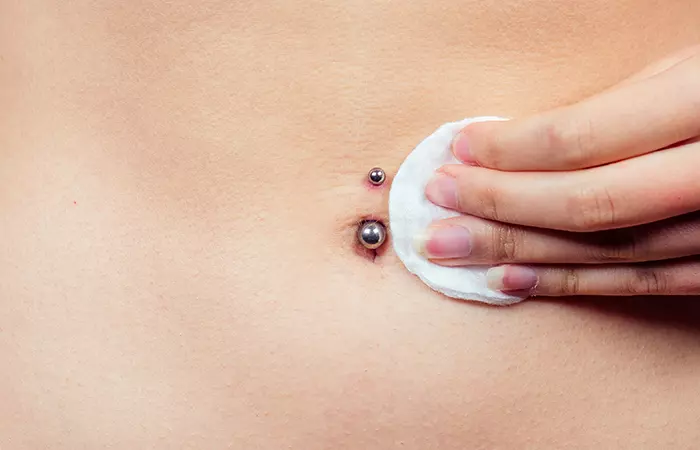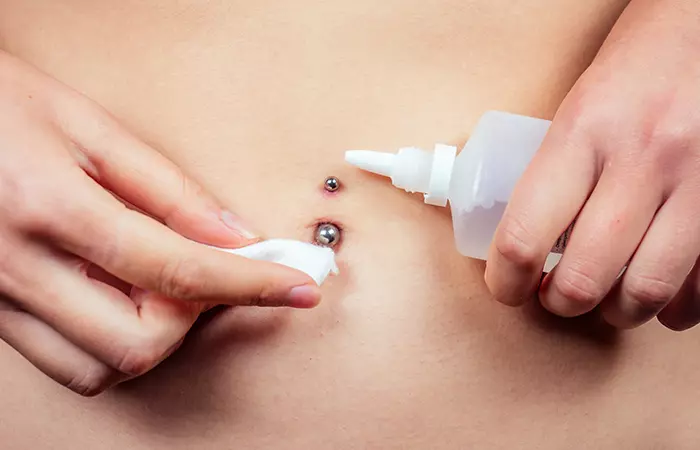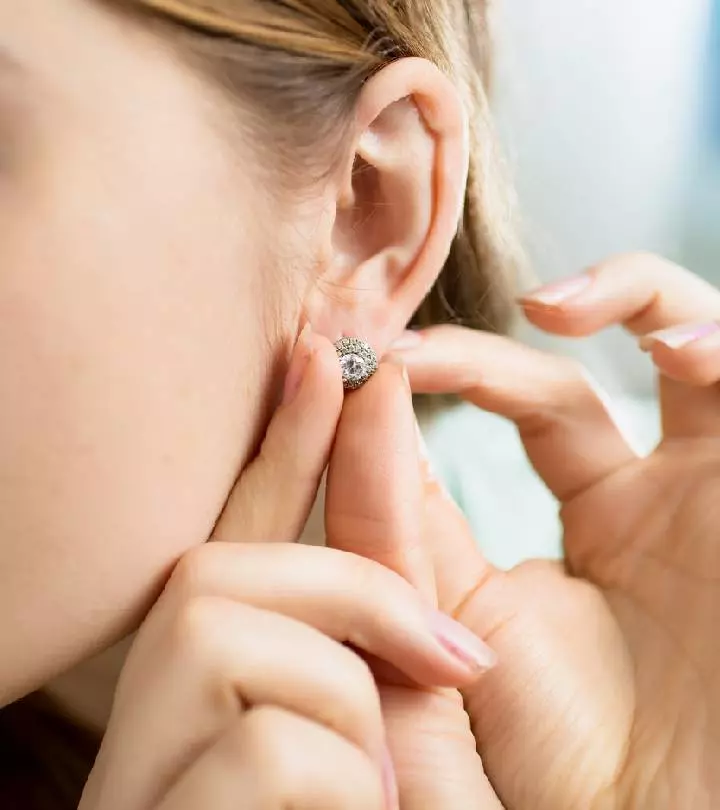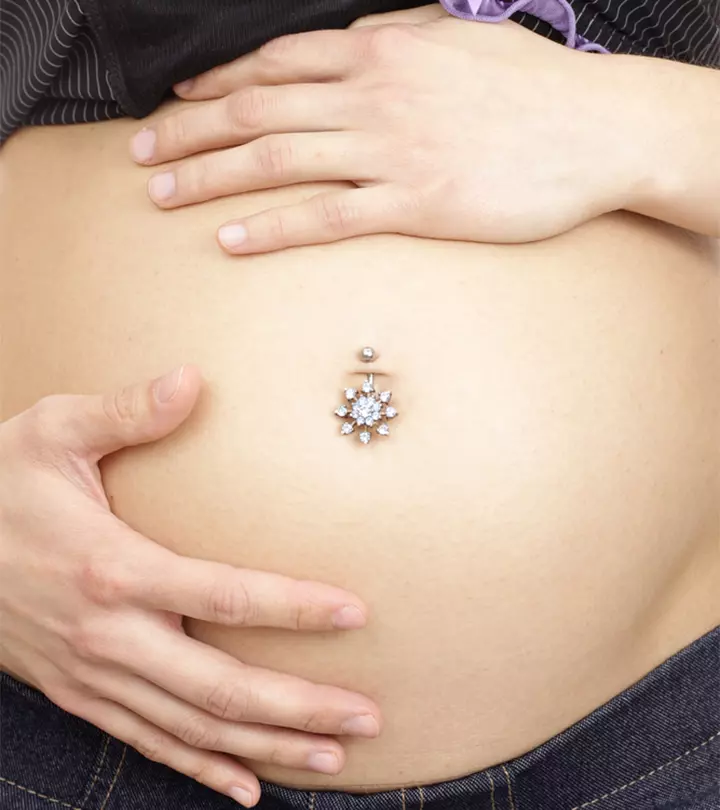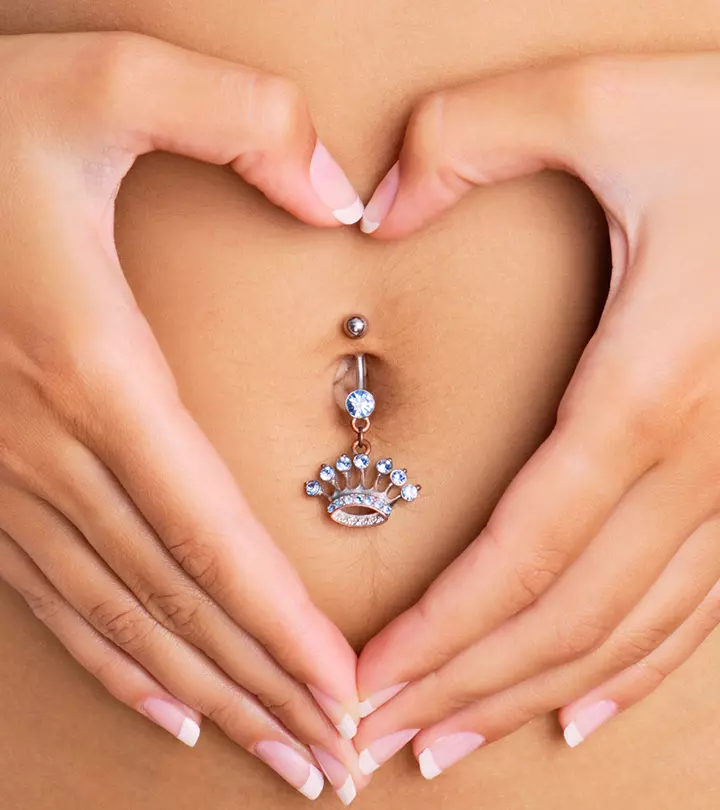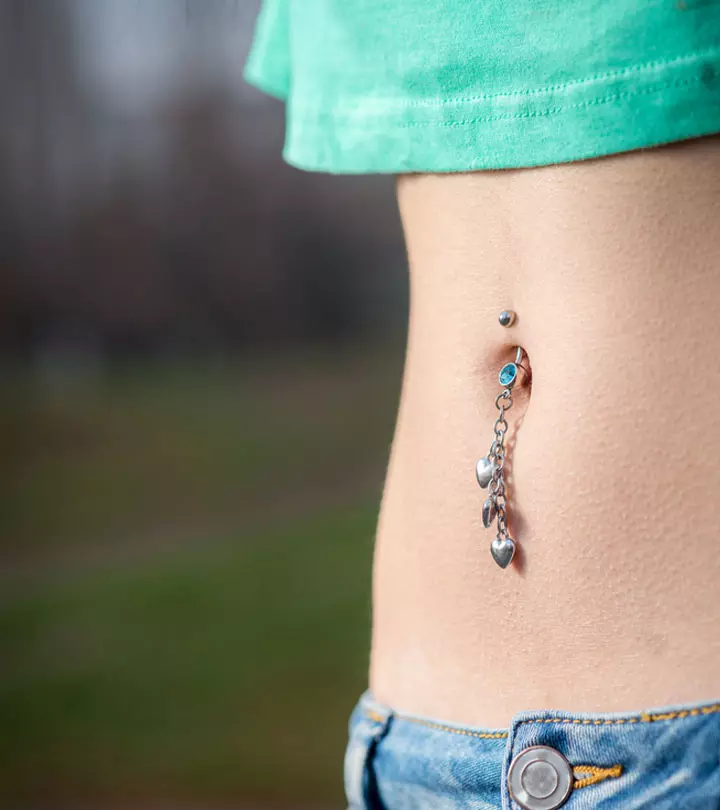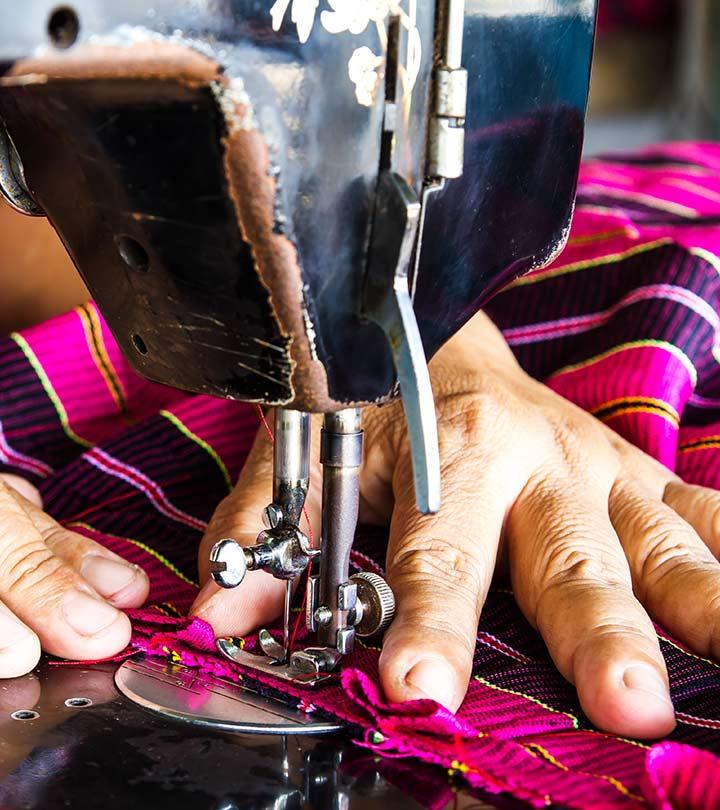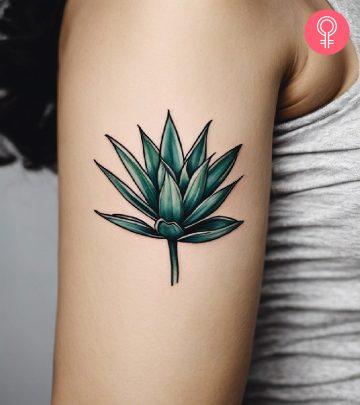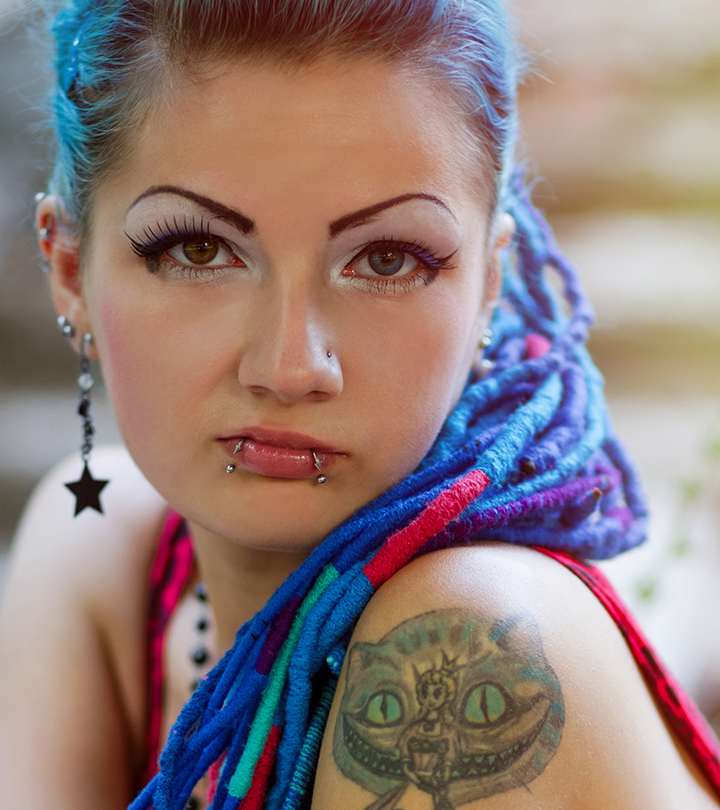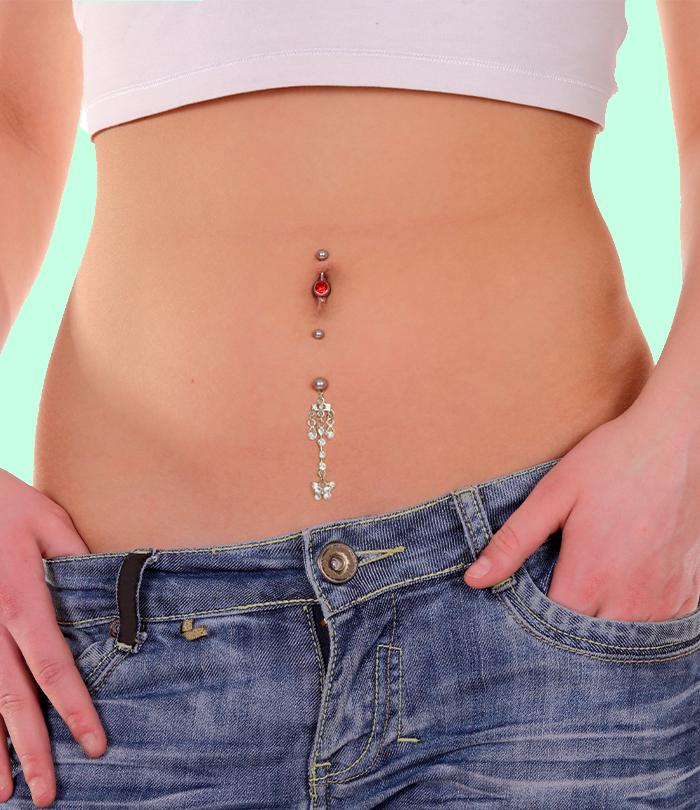When Can I Change My Belly Piercing? The Complete Guide
Switching out this jewelry requires a bit more care than you think.
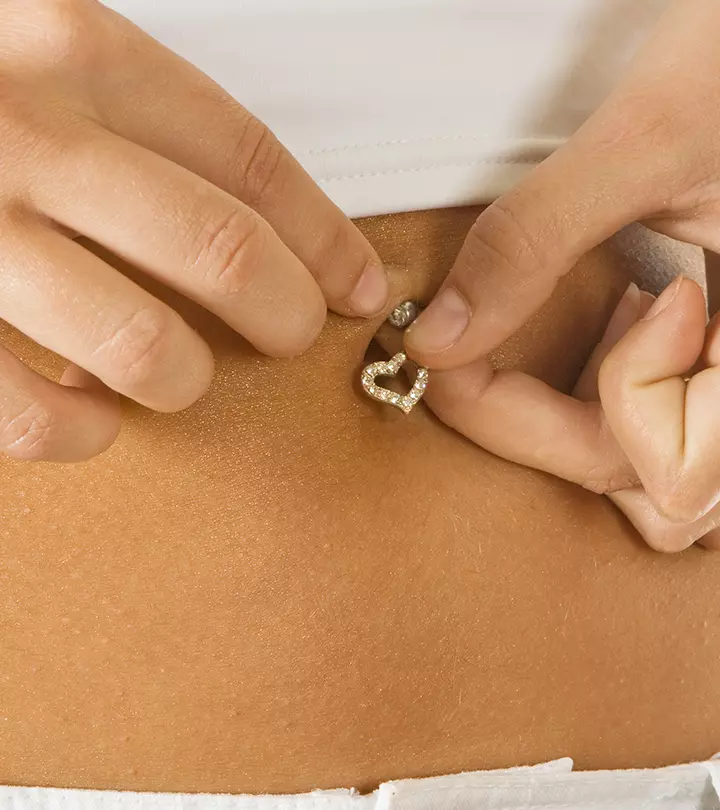
Image: Shutterstock
All the ‘90s trends are back, and they are bringing the ever-so-popular belly piercings with them! However, these piercings do not heal quickly, which may leave you wondering, “When can I change my belly piercing?” While belly rings come in various exciting designs that you may want to try out, you must prioritize healing your piercing properly before switching out the jewelry. In this article, we will help you get an idea of how long a belly piercing takes to heal, offer tips on wound care and recovery, and show you how to change out your piercing with care. We will also tell you everything you need to know about changing your belly ring, including the aftercare and risks associated with improper healing. Keep reading to find out more!
In This Article
When Can I Change My Belly Piercing?
The simple answer is, you can change it after it heals completely. Generally, a belly button piercing heals in around 6 months to 1 year. But, this period can vary from person to person, depending on your skin type, aftercare, and hygiene practices. Hence, there is no definitive answer to this question. For some people, it might take only a few months to heal, while for others it might even take a year. So, you can change your belly piercing only when it has completely healed, does not have signs of infection or irritation, and your piercer confirms it is safe to change it.
The healing process takes time because there are different stages of healing a belly button piercing:
- During the first few days, your new body modification will be tender and swollen, as it is in the inflammatory phase. You should not disturb the fresh piercing at this stage.
- After 3 to 4 weeks, the skin around the healing piercing will be reddish, sensitive to touch, and swollen. You might even experience mild bleeding. Though these signs may disappear after a couple of weeks, there is a high chance that the swelling and discharge may reappear. It might be still healing internally and cause skin infections if you try to change it.
- After 6-12 months, the body will begin to show signs of healing, which is when change can be considered following a consultation with your piercer.
So, there are a few signs that you need to look for to know whether your skin has completely healed. Keep reading to discern whether your piercing has healed.
Signs Your Belly Piercing Has Healed
The first sign is when the skin around the piercing is the same color as the rest of your belly. Even then, you should wait for a couple of weeks to confirm. If the skin does not show any other change, then you can try to change the piercing jewelry.
To confirm the piercing is not hiding any infection, take a tissue and gently press the piercing. If you notice any pus, lymph, or discharge, it is recommended to wait a bit longer. Also, if the fluid around the piercing starts to smell or appear unusual in color, it is necessary to see a medical professional as these are common indications of an infection (1).
The final sign that the healing is complete is if you do not experience any pain when you move or touch the navel ring. You may also slide your piercing ring up and down with your finger to see if it is moving easily. If the ring does not move freely and sticks to the skin, it means that you still need to wait.
Therefore, the four important signs that indicate your body piercing has healed are as follows:
- The skin around the piercing appears healthy, showing no signs of redness or swelling.
- There is no longer any crust formation or fluid discharge.
- Pressing around the wound does not cause any pain.
- The ring can be moved without obstruction.
Though most professional piercers recommend waiting for 6-12 months, the healing times vary among individuals; therefore, these necessary indicators should not be overlooked in haste. Not giving importance to these signs might cause further complications. Check out the next section to learn the risks of changing a belly button ring too soon.
Importance Of Healing A Belly Piercing Before Changing The Jewelry
Replacing a belly button ring before the piercing has completely healed can result in various risks:
- Infection: Since the wound has not healed completely, putting in a new belly button ring too soon can let bacteria into the piercing, causing an infection.
- Rejection: Your body might see the new ring as something foreign and try to push it out (2). This can happen if you change the jewelry too early, or if your body does not like the material.
- Slow Healing: Switching the jewelry too quickly can mess up the healing process and make the duration for the piercing to fully heal much longer.
- Tearing: While a piercing is still healing, the tissue is fragile. Changing the jewelry too soon can tear it, which will be painful and might leave scars.
- Swelling And Irritation: Changing a belly button ring before complete healing can make the area swell more and become more irritated.
- Keloids And Scars: These are raised tissue formation of scars that can up if a piercing gets disturbed while it is healing (3).
These risks emphasize the necessity of waiting until your belly button piercing is completely healed before swapping out the ring. If you are unsure, it is best to seek guidance from a professional piercer who can provide expert advice to help prevent these possible issues.
However, the risk of infection cannot be eliminated, highlighting the importance of proper changing procedures. Read on to learn how to change your belly button jewelry to prevent infections.
A Step-By-Step Guide On How To Change A Belly Piercing
Learning how to change your belly rings properly can help prevent actual infections resulting from poor hygiene and carelessness.
- Step 1: Before changing your piercing, wash your hands with an effective antibacterial soap. When changing your piercing for the first time, your primary concern should be preventing infection, as bacteria from your hands can easily contaminate the piercing site.
- Step 2: Clean the new jewelry before wearing it. Dip the new belly button ring into a small amount of alcohol or tea tree oil. Wipe it clean with a Q-tip, ensuring it is dry before inserting it near the piercing. You may also use an antibacterial or mild, fragrance-free soap.
- Step 3: Remove the current belly button ring and clean the piercing area. Mix ¼ tablespoons of salt with a cup of water (warm) to make a salt solution. Soak a cotton ball in it, and use it to clean the area of the piercing (4).
- Step 4: Unscrew your new jewelry. Once you have taken off the stay (the ball), the jewelry piece should come out smoothly. Typically, the belly button ring should slide upward, with the ball being screwed on from the top. It is easier to gently guide it through the piercing rather than forcing it.
 Quick Tip
Quick Tip- Step 5: Clean the starter jewelry. Prepare a salt solution with warm water and clean the old jewelry using a Q-tip. Dry it properly before keeping it aside.
Jazmine Monet, a fashion and lifestyle video content creator, shared her experience of changing her belly button piercing on her YouTube channel. She says it is best to wait for a year to change the piercing. She also recommends cleaning the jewelry before using it, stating, “I clean everywhere. I put every piece in the alcohol. I put the top bar and the bottom piece. Make sure it’s not touching the counter. That’s why I put it on a clean tissue or a clean paper towel so that you don’t get dirty (i).”
It does not end with wearing the new piece of jewelry and keeping the old one safe in a cupboard. Taking proper care of the piercing after changing the jewelry is equally important. Keep reading to know how to take care of the navel piercing post-changing.
Follow these aftercare tips to ensure your new jewelry does not cause any skin irritation, allergic reactions or infections:
- Clean your belly piercing with saline solution twice a day. While cleaning, ensure you move your piercing up and down to spread the solution. Pat it dry with a clean paper towel.
- Avoid touching your piercing unnecessarily and only when you are cleaning it.
- Wear crop tops or loose-fitting clothing that does not stick to your skin. Try to wear breathable clothing to prevent sweat accumulation.
- Sleep on your back for at least a month after changing to the new navel jewelry to prevent pulling or tugging at your piercing.
- Avoid doing strenuous exercises involving your core muscles that put pressure on the skin. You may do low-impact workouts that do not affect the piercing site.
- Steer clear of swimming pools, rivers, or any other natural body of water (5). Ensure you wash the piercing with antibacterial soap after you bathe.
- Keep your navel jewelry in place even if you suspect an infection as removing it might trap bacteria within the piercing.
- Consult your healthcare provider if you notice any signs of infection or allergic reactions. If you observe heightened swelling, red lines around your belly button, the presence of blood or pus seeping from the piercing holes, or persistent and severe pain lasting more than 1-2 days, seek immediate medical care.
 Pro Tip
Pro TipThe process of changing a belly button piercing requires patience and careful attention to ensure proper healing and minimize the risk of complications. It is essential to wait until the piercing has fully healed before attempting to change the jewelry, as doing it earlier can lead to infections, rejection, slow healing, tearing, swelling, and scarring. Also, you need to pay attention to signs of healing, such as the absence of pain and ease of movement of the jewelry to determine when it is safe to change the piercing. You may consult with a professional piercer for guidance if you are unsure about anything.
Frequently Asked Questions
Should I be cleaning the crust of my piercing?
Yes, you may gently clean any crust buildup that forms around your piercing. Use a sterile saline solution or warm water to soften the crust, then carefully wipe it away with a clean cotton swab. Avoid picking at the crust to prevent irritation or injury to the piercing site.
Can I change my belly piercing if it’s still crusty?
No, it is generally not recommended to change your belly piercing if it is still crusty. Crusting can be a sign that the piercing is still healing, and changing the jewelry too soon can affect the healing process and increase the risk of complications. It is best to wait until the crustiness has resolved, and the piercing has fully healed before considering changing the jewelry. If you are unsure, consult with your piercer for guidance.
Can I change my belly piercing to a different style or size of jewelry?
Yes, you can change your belly piercing to a different style or size of jewelry, but it is essential to ensure that the jewelry fits the pierced hole without force, and that it is made of hypoallergenic materials. Once your piercing has healed, consult with a professional body piercer to ensure safe and appropriate jewelry changes.
Key Takeaways
- Wait until your belly piercing has completely healed before considering changing the jewelry.
- Signs of a healed piercing include consistent skin color, absence of crust formation, pain-free touch, and easy movement of the jewelry.
- Changing jewelry too soon can lead to risks such as bacterial infections, rejection, slow healing, tearing, swelling, and scarring.
- Proper hygiene, care, and consultation with a professional piercer are crucial to prevent complications and ensure successful healing of the belly button piercing.
When removing jewelry from a healed belly button piercing, it is important to proceed with care to avoid disturbing or irritating the surrounding skin. If you are wondering how to remove it the right way, watch this video to learn.
Personal Experience: Source
StyleCraze's articles are interwoven with authentic personal narratives that provide depth and resonance to our content. Below are the sources of the personal accounts referenced in this article.
(i) Changing my belly piercing for the first time
References
Articles on StyleCraze are backed by verified information from peer-reviewed and academic research papers, reputed organizations, research institutions, and medical associations to ensure accuracy and relevance. Read our editorial policy to learn more.
- Body piercing infections
https://www.ncbi.nlm.nih.gov/books/NBK537336/ - Complications of body piercing
https://www.aafp.org/pubs/afp/issues/2005/1115/p2029.html - Hypertrophic scarring and keloids: Pathomechanisms and current and emerging treatment strategies
https://www.ncbi.nlm.nih.gov/pmc/articles/PMC3022978/ - Suggested aftercare for body piercings
https://safepiercing.org/aftercare/ - Infections acquired via fresh water: From lakes to hot tubs
https://journals.asm.org/doi/10.1128/microbiolspec.iol5-0019-2015
Read full bio of Madhumati Chowdhury
Read full bio of Aparna Harry






